2024 Sales Trends That Will Transform Your Strategy
Casey O'Connor
Contents
- 1. Building Customer Trust through Data Protection
- 2. Leveraging Sales Automation for Efficiency
- 3. Embracing Value-Based Selling
- 4. Utilizing The Power of Social Selling
- 5. Mastering Data-Driven Selling
- 6. Engaging B2B Buyers With Multi-Channel Personalization
- 7. Incorporating Video in Sales
- 8. Promoting Ethical Sales Practices
- 9. Transforming Sales Efficiency: Artificial Intelligence and Machine Learning
- 10. Targeting Gen Z: Strategies for the New Generation of B2B Buyers
- 11. Elevating Customer Experience in B2B Sales
- 12. Sales and Marketing Alignment: A Unified Approach
- 13. The Rise of Influencer Marketing
- Conclusion
It’s no secret that sales trends come and go. In fact, some reps have even worked in the field long enough to see some trends cycle through the “Year’s Top Trends” list more than once.
And while strong sales fundamentals are what will ultimately create long-term success for your team, some sales trends are worth much more than a passing glance.
Sales teams that want to stay competitive and continue to impress buyers need to be knowledgeable about and willing to adopt current sales trends.
After all, sales trends become trendy for a reason — there’s usually at least some merit behind the idea that’s worth exploring.
Take the idea of sales tech, for example. Teams that sat on the sidelines and waited for the “tech trend” to pass had a lot of catching up to do when it became clear that sales tech was here to stay (and, in fact, go on to transform the entire industry).
In this article, we’ll go over everything you need to know about the top sales trends in 2024 and why they’re so important to pay attention to, with a focus on topics like technology and AI, data protection and privacy, and hyper-targeted personalization (including strategies for the newest generation of buyers).
Here’s what we’ll cover:
- Building Customer Trust through Data Protection
- Leveraging Sales Automation for Efficiency
- Embracing Value-Based Selling
- Utilizing the Power of Social Selling
- Mastering Data-Driven Selling
- Engaging B2B Buyers with Multi-Channel Personalization
- Incorporating Video in Sales
- Promoting Ethical Sales Practices
- Transforming Sales Efficiency: Artificial Intelligence and Machine Learning
- Targeting Gen Z: Strategies for the New Generation of B2B Buyers
- Elevating Customer Experience in B2B Sales
- Sales and Marketing Alignment: A Unified Approach
- The Rise of Influencer Marketing
1. Building Customer Trust through Data Protection
With more and more of the sales process taking place online, data security practices are at the forefront of buyers’ minds. 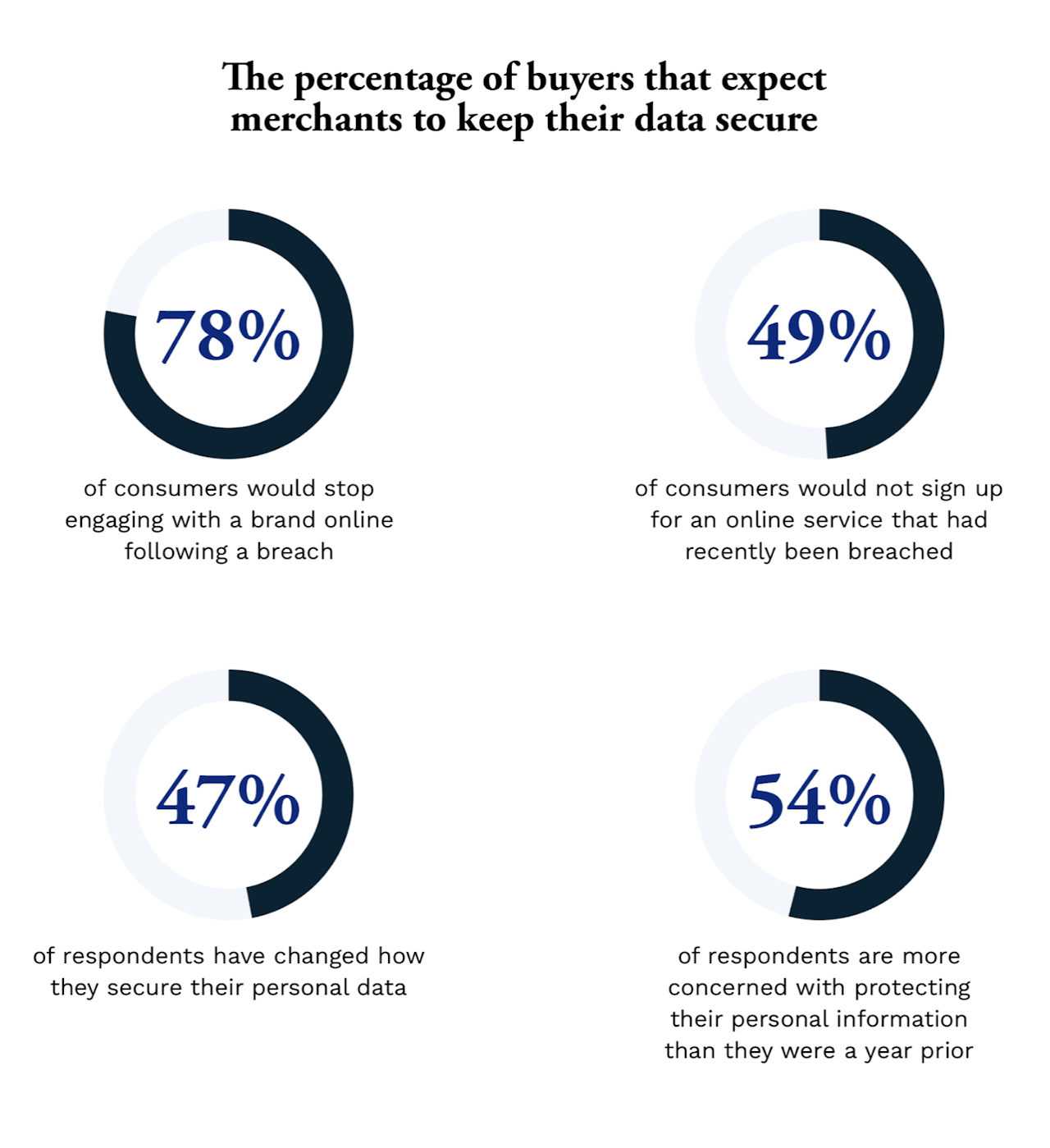 In fact, recent data from McKinsey showed that a whopping 87% of B2B buyers will not move forward with a purchase if they have concerns about an organization’s data privacy practices.
In fact, recent data from McKinsey showed that a whopping 87% of B2B buyers will not move forward with a purchase if they have concerns about an organization’s data privacy practices.
First and foremost, it’s crucial that your sales and marketing teams remain forthcoming and transparent about how, when, and why they’re collecting data from prospects. And ensure that you have their consent before gathering and storing their information.
It’s also equally important to ensure that everyone on both teams is fully trained in data security practices. Stanford research showed that 88% of data breaches are a result of human error, so take the time to ensure that nothing is left up to chance, guesswork, or lack of training.
There are also very specific security protocols and compliance factors that will help buyers feel more secure in how responsible you are with their data.
If, for example, your organization can adhere to national and global standards (e.g., GDPR, CCPA), they’re more likely to feel confident in your commitment to data privacy. 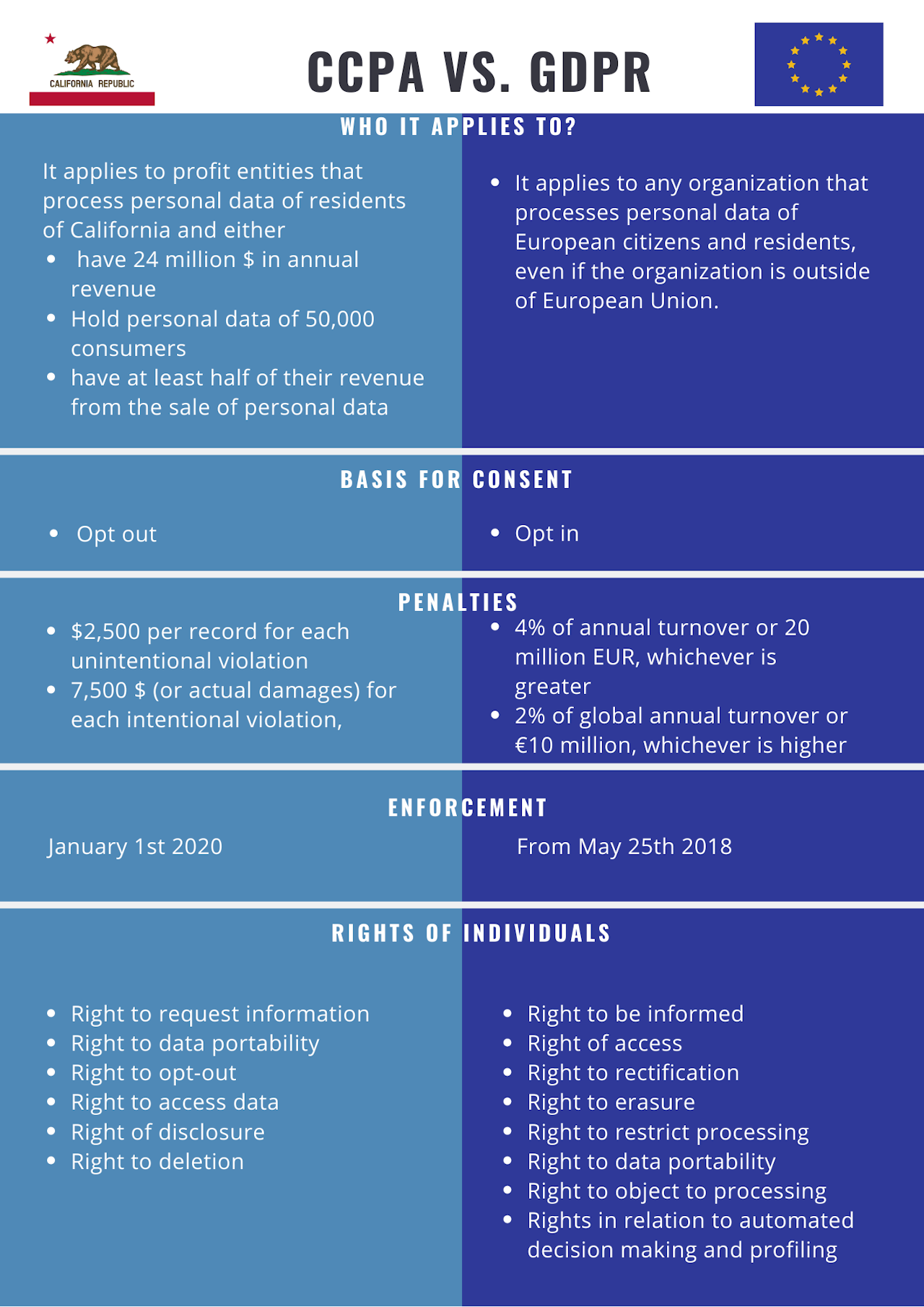
It’s also important to be proactive in communicating any privacy changes or updates your process undergoes over time.
And, in the worst-case scenario, data breaches should be addressed with urgency, transparency, and (of course) remorse.
2. Leveraging Sales Automation for Efficiency
Sales automation isn’t necessarily a “new” trend, as the idea of automating some administrative sales tasks has been around for a while now.
That being said, the field of sales automation is growing and advancing every day, and teams that have learned how to leverage it can stand to gain a lot; technology that automates tasks for sales reps has been shown to boost sales by 10% and efficiency by 15%.
Sales automation also improves:
- Sales rep productivity
- Revenue generation
- Customer interactions
- Buyer satisfaction
- Data accuracy
- Lead generation and lead management
- Lead response time
There are tools and technologies to automate just about every part of your sales process, from lead generation to sales operations to training and coaching.
And with the average sales rep only afforded about 36% of their time for actual revenue-generating sales activities, every minute saved on non-selling tasks really adds up in the end.
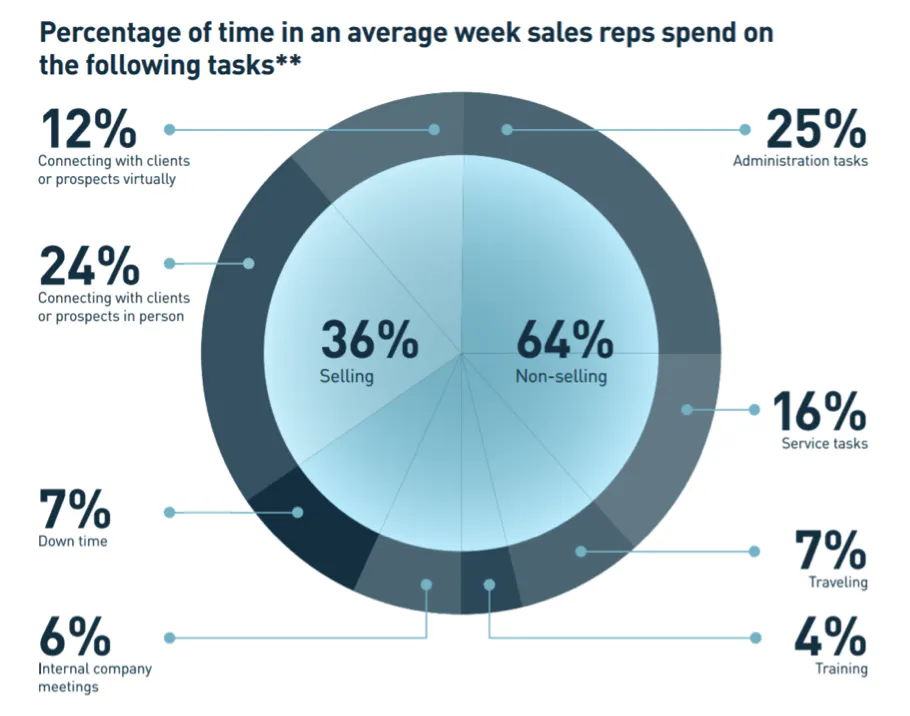
Sales automation helps reduce friction for both internal sales processes and buyer-facing tasks and makes it easier for reps to build relationships and close deals.
3. Embracing Value-Based Selling
Value-based selling is another trend that’s been buzzing around for a few years now, especially in the midst of prolonged economic uncertainty during and after the pandemic. 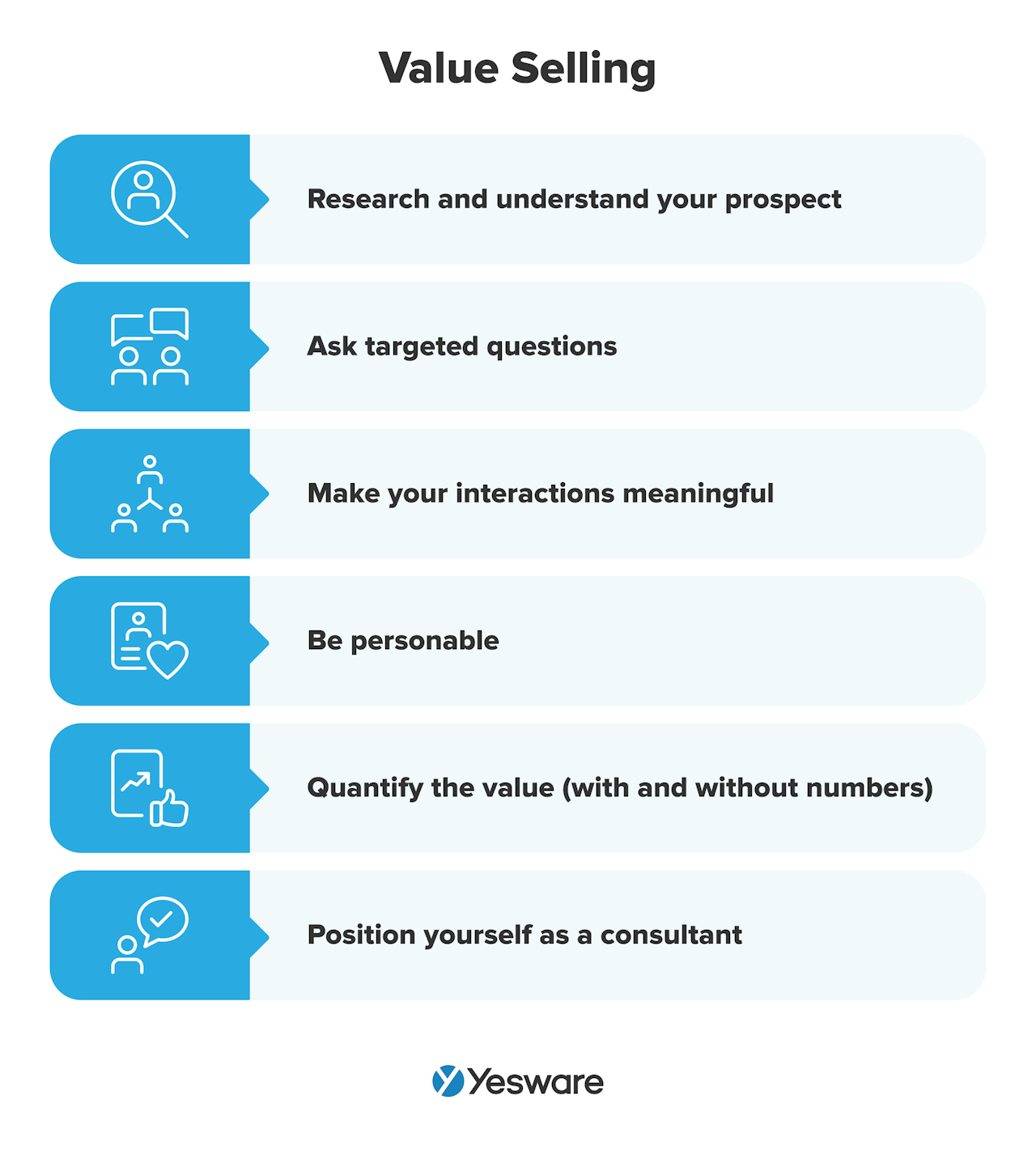 This sales approach helps buyers focus on the benefits and the tangible value they can potentially realize if they implement your solution.
This sales approach helps buyers focus on the benefits and the tangible value they can potentially realize if they implement your solution.
Value selling can be a very effective approach if your team regularly encounters objections around cost.
The real reason that value-based selling is trending now, though, is not really because of economic or cost reasons.
Rather, it’s in response to the fact that today’s B2B buyer is more educated, informed, and opinionated than ever before. They are often relatively clear on what they need and want before they interact with anyone from a sales team.

It’s the sales rep’s job, then, to communicate the offer’s value.
To implement this approach, it’s important that sales reps have a very clear understanding of their ideal customer profile (ICP) and the specific buyer persona. 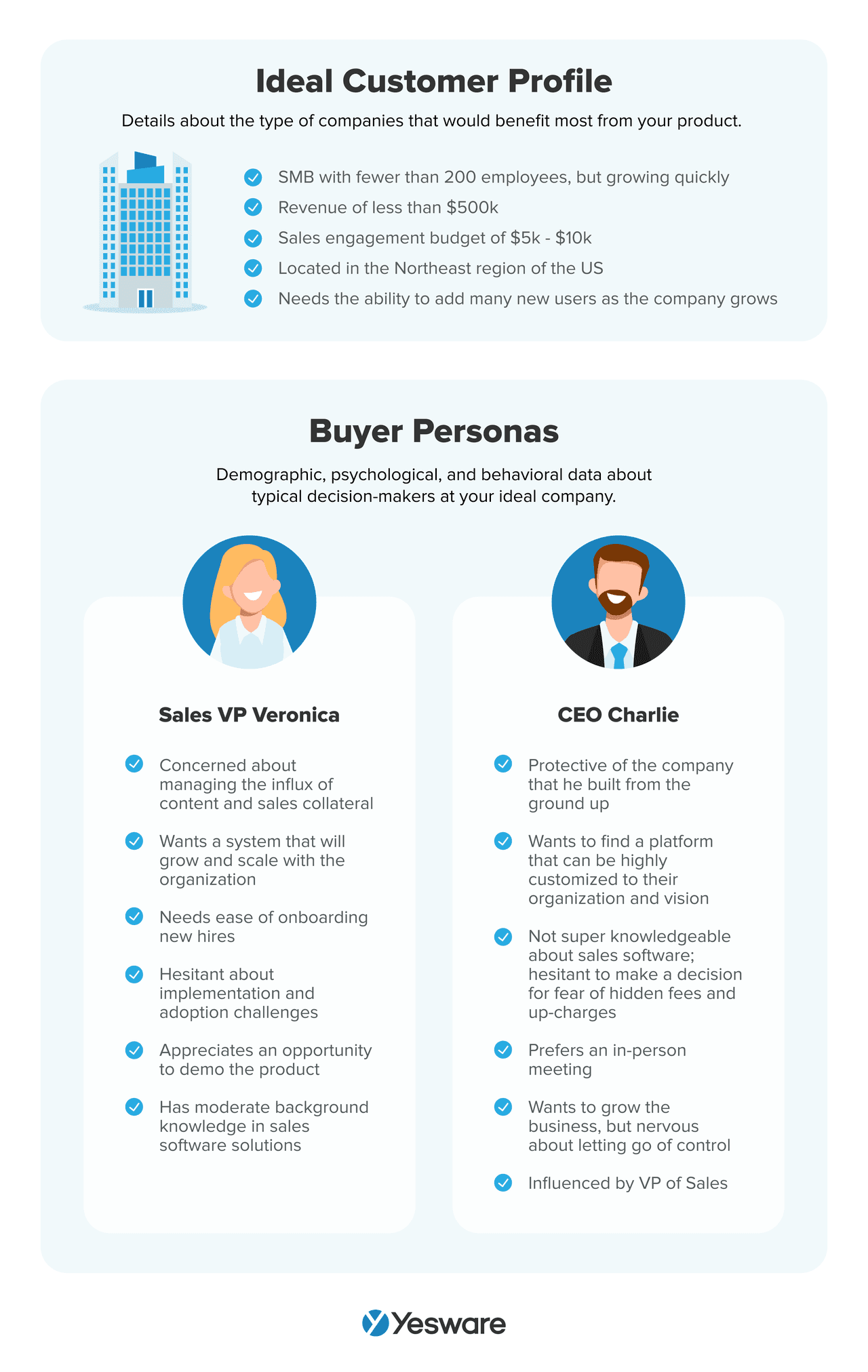 The rep’s role in this value-based selling is to educate and guide the buyer, not necessarily persuade them. Be patient, and focus on adding value within every interaction.
The rep’s role in this value-based selling is to educate and guide the buyer, not necessarily persuade them. Be patient, and focus on adding value within every interaction.
Another key aspect of value selling is disqualifying leads and prospects who aren’t a good fit. This approach encourages sales reps to quickly cut ties with leads who aren’t qualified.
It’s much more important to be able to add value than to make the sale.
4. Utilizing The Power of Social Selling
Social selling is another trend that’s been around for a bit but is gaining massive popularity as time goes on.
Perhaps that’s because there’s finally enough data to gain some reliable (and impressive) insight into its effectiveness. 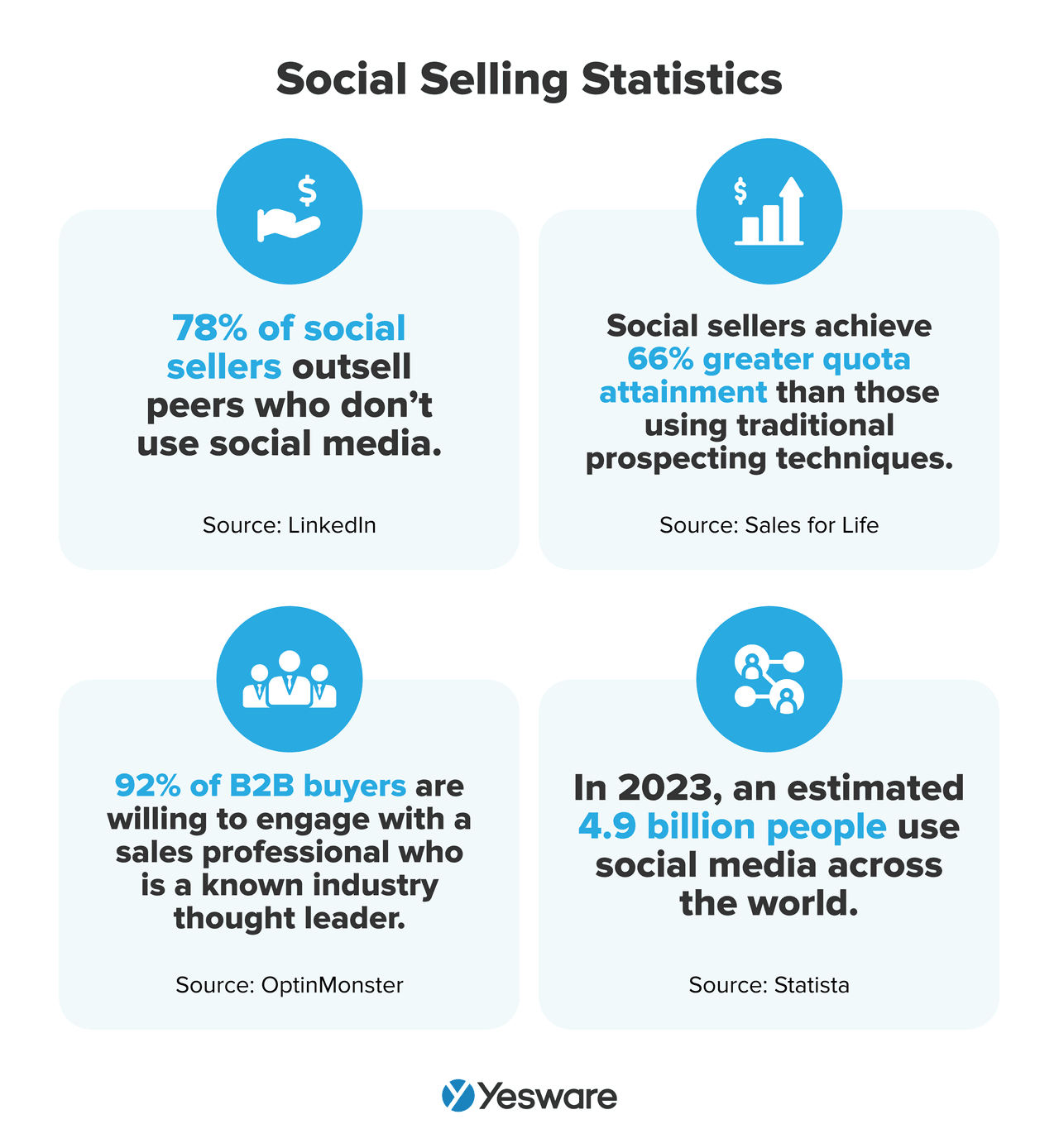 Social selling is the process of using social media platforms to connect with and educate buyers in a friendly and personal way.
Social selling is the process of using social media platforms to connect with and educate buyers in a friendly and personal way.
Social selling strategies also help organizations use their social media presence to develop a brand reputation of expertise and thought leadership.
Truthfully, given the benefits, this is another “trend” that’s more likely to stick around than fizzle out any time soon. 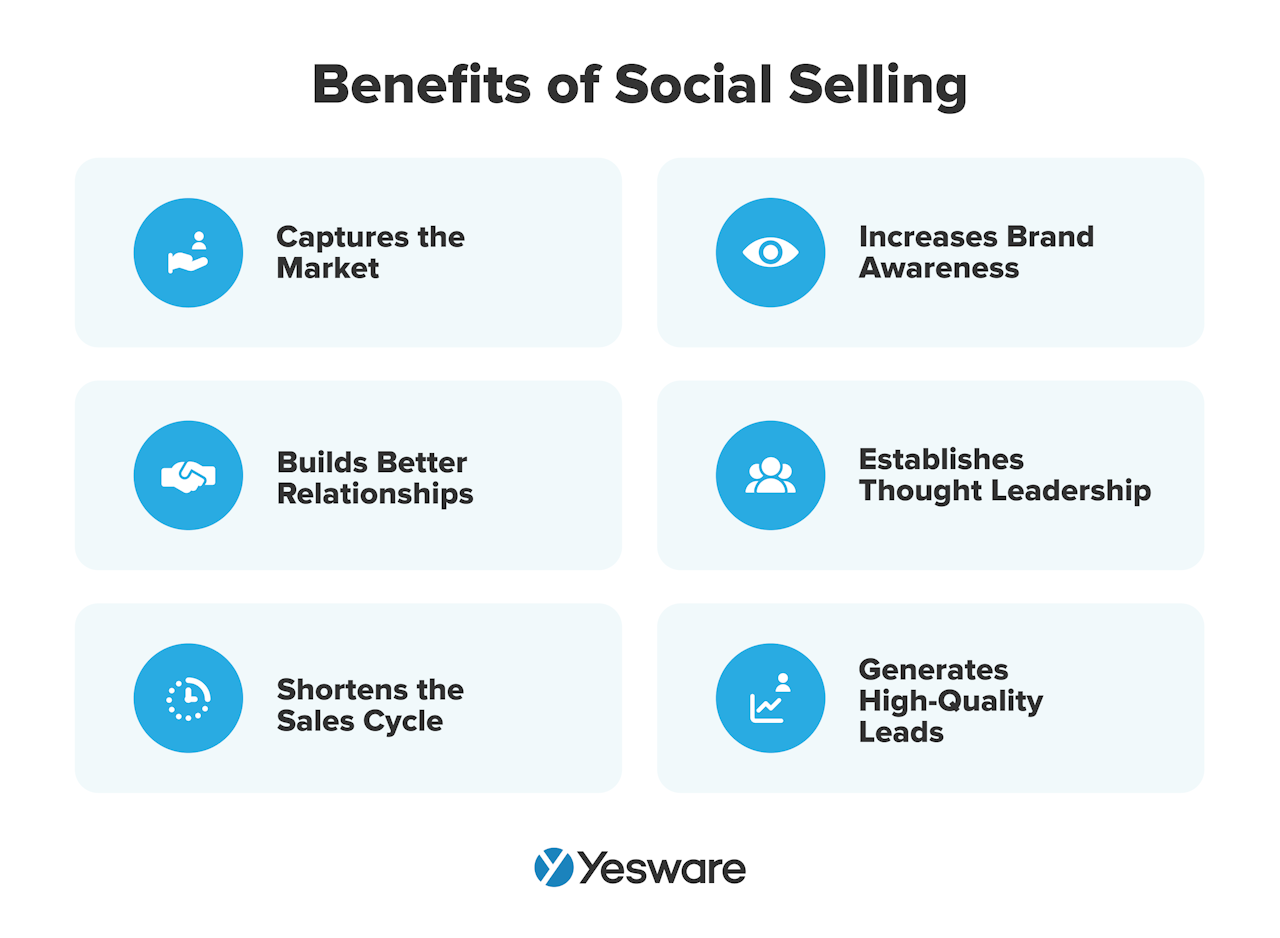
5. Mastering Data-Driven Selling
Most sales teams know the importance of data in the sales process, but many still struggle to use that data effectively to drive their business forward.
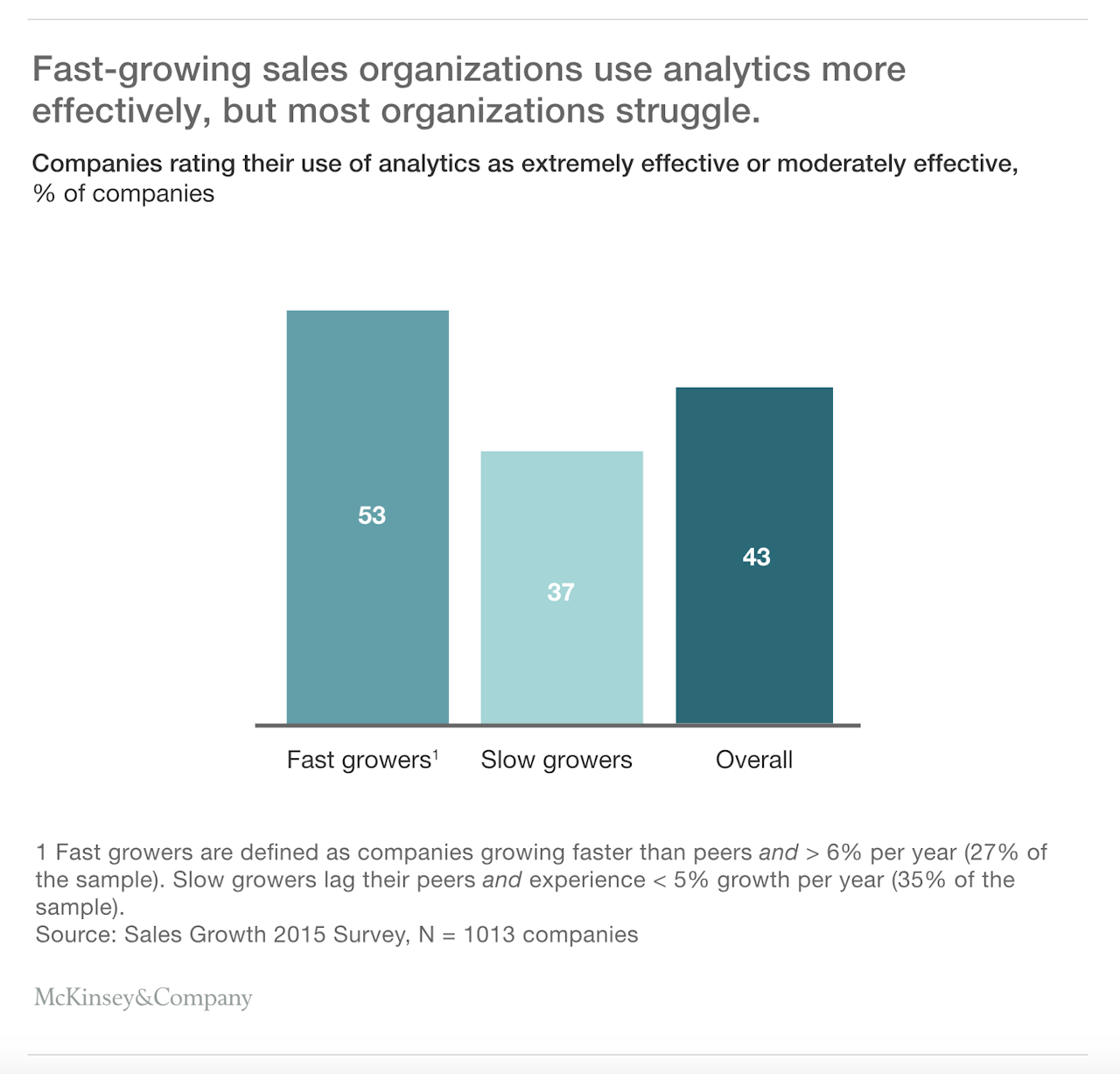
In fact, 57% of respondents reported themselves as not using advanced data analytics effectively in their sales process.
To implement a data analysis process that’s actually meaningful to your team, it’s important to focus on the specific sales metrics and sales KPIs that will bring your team the most value at any given time.
Sales Metrics
These metrics will depend on your sales and overall organizational goals, but may include:
- Lead conversion rates
- Customer lifetime value (LTV)
- Time spent in each stage of the sale process
- Length of sales cycle
- Customer acquisition cost (CAC)
- Net promoter score
It’s also crucial that your team has access to the right tools to help them make sense of the tremendous amount of data that will be used during analysis.
A CRM is non-negotiable. If you can find one that includes data hygiene features (or add a tool to your sales tech stack that can help with this), that’s even better. 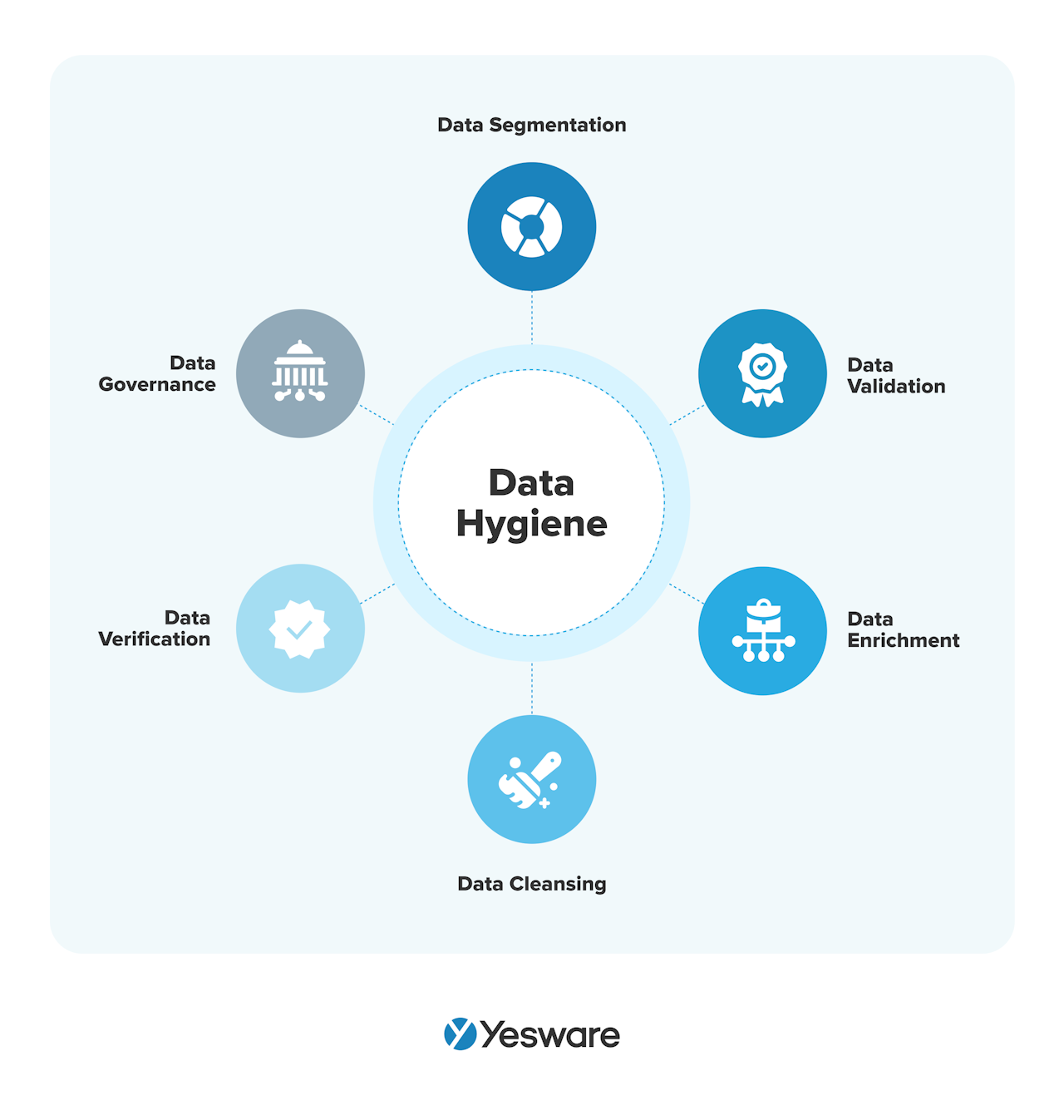 These days, data analysis focuses a lot on buyer needs, preferences, opinions, perceptions, etc. This is often referred to as “sentiment analysis.”
These days, data analysis focuses a lot on buyer needs, preferences, opinions, perceptions, etc. This is often referred to as “sentiment analysis.”
Some sentiment analysis tools can even help sellers analyze voice conversations.
For a productive and effective data-driven approach, make sure that everyone on your team understands the expectations around what sales data they’ll need to collect, where and when to store it, and how they’ll be asked to participate in its analysis.
Data analysis can seem tedious, especially when it feels like there are always new ways to consider the numbers. Keep in mind, though, that companies that make data-backed decisions throughout the sales process are 58% more likely to beat revenue targets than those that don’t.
6. Engaging B2B Buyers With Multi-Channel Personalization
Every buyer will have their own personal preference when it comes to how they like to be contacted; some prefer email, some spend most of their time on social media, and some might even like to do business the “old-fashioned way” (over the phone).
In today’s digital age, though, savvy sellers know that they need to be in touch with prospects across various channels to guide buyers through the process and stay top of mind.
That’s why it’s important to implement a multi-channel approach in your prospecting campaigns:
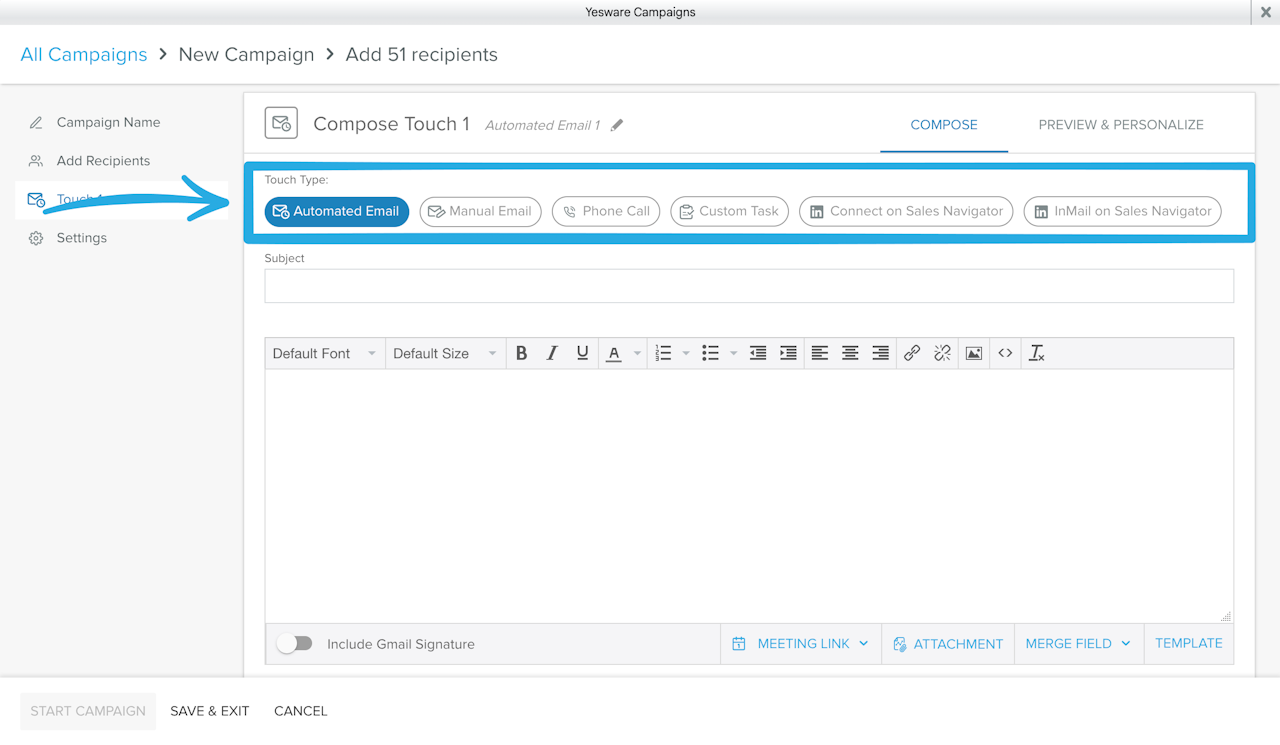
A personalized, multi-channel engagement strategy can be a game-changer when it comes to building better relationships with buyers and closing more deals.
The ability to reach customers through a variety of channels can also help teams:
- Generate more leads
- Broaden their market reach
- Improve their efficiency
- Reduce operating costs
- Increase customer satisfaction
- Promote cross-sells and upsells
- Improve profit margin
The more readily available your team can be, the more you can allow the buyer to feel like they’re in control of the process (and that you’re willing to go the extra mile for them).
One thing to note about multi-channel outreach: make sure your messaging, branding, and overall strategy are consistent across platforms. You should, of course, adjust your messaging to fit the norms of the channel (Twitter is not the place for blog posts), but your outreach should feel generally cohesive.
7. Incorporating Video in Sales
Incorporating video into the sales process is one of the most popular trends in sales today, and for good reason.
As of 2019, over 85% of businesses were using video components in their sales process; the trend has only become more widely used in 2024.
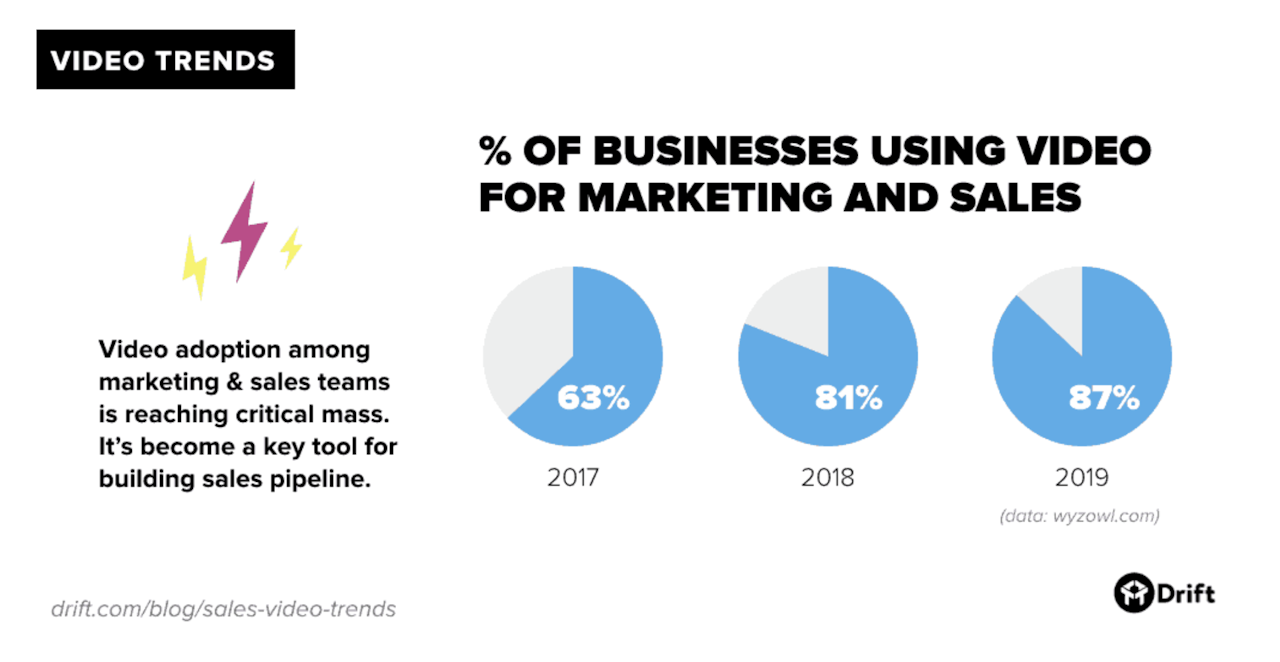
In fact, many buyers have come to rely outright on videos during their buying journey, with over 90% watching explainer videos before making a purchase.
One common way that sales and marketing teams use video is for product demonstrations. Some teams opt for a professional videography shoot for this, but it can also be very effective to show videos of real users operating the product in real life. This can help add credibility to your offer.
Some marketing and sales teams also use sales videos for collateral like case studies, testimonials, personalized introductions, value demonstrations, and more.
To make a solid professional impression, make sure your videos are edited, high quality, and embedded into your other media, where necessary.
Tip: Learn about the lastest sales outreach trends and data-backed findings in our ebook below.
 Sales Engagement Data Trends from 3+ Million Sales ActivitiesLooking at millions of tracked email activity over the past few years, this ebook is filled with our top studies and findings to help sales teams accelerate results.
Sales Engagement Data Trends from 3+ Million Sales ActivitiesLooking at millions of tracked email activity over the past few years, this ebook is filled with our top studies and findings to help sales teams accelerate results.
8. Promoting Ethical Sales Practices
Remember how we talked about how buyers are more informed than ever before? That goes beyond just their research about product features and benefits.
Buyers now have access to (and, in many cases, care very much about) information on how an organization runs their business from an ethics standpoint.
In fact, ethical sales practices are more important to buyers than ever.
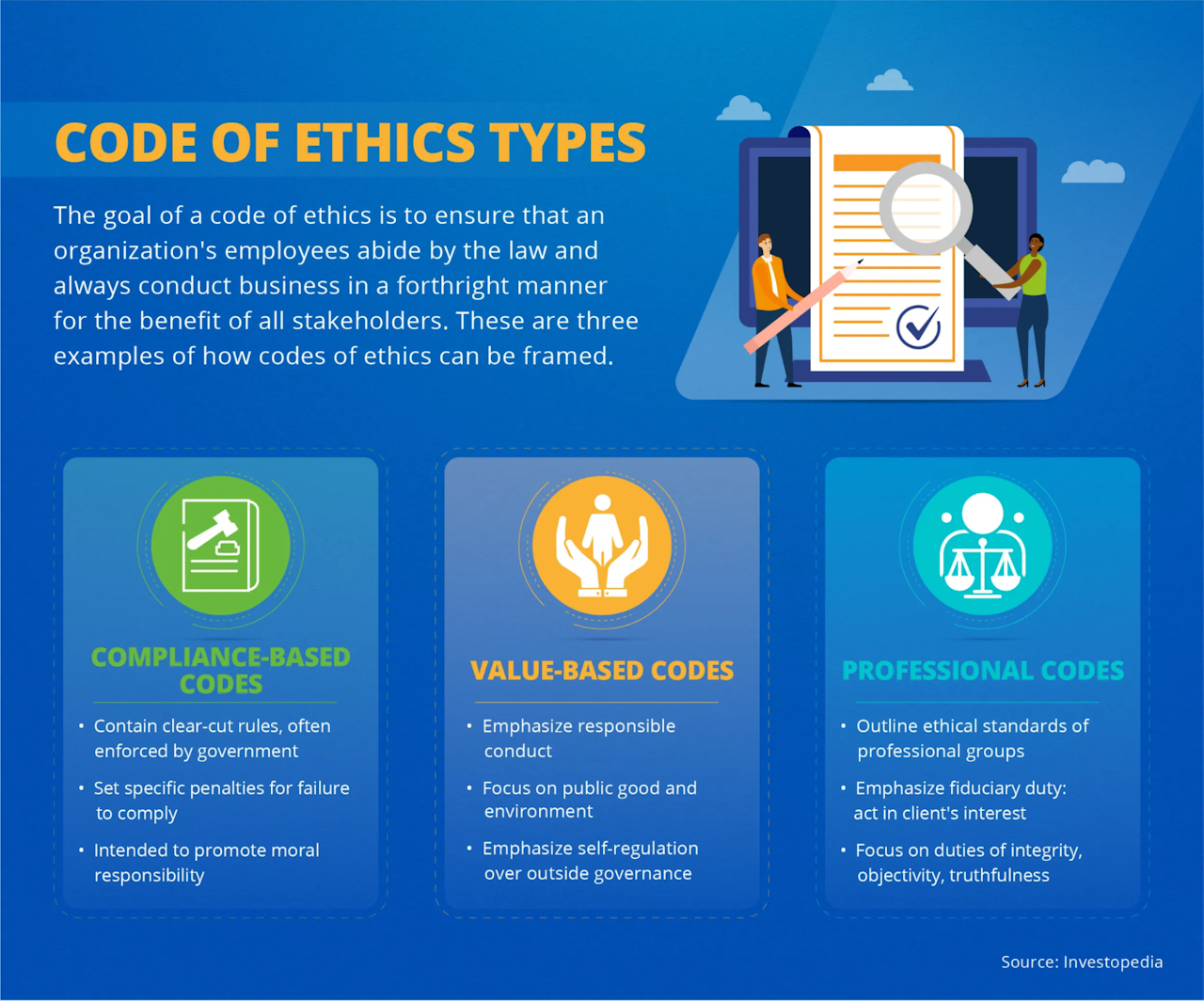
In reality, ethical sales practices shouldn’t be a trend. These should be inherent best practices for every sales organization.
Not only do ethical sales practices have a big impact on your brand’s reputation, but demonstrating that you consistently adhere to best practices also improves customer loyalty.
9. Transforming Sales Efficiency: Artificial Intelligence and Machine Learning
Artificial intelligence (AI) and machine learning (ML) are two of the newest sales trends to enter the scene, and their breadth, power, and sophisticated capabilities are growing every day.  Artificial intelligence and machine learning are transforming the way sales teams maximize their productivity, connect with their leads, and grow their businesses.
Artificial intelligence and machine learning are transforming the way sales teams maximize their productivity, connect with their leads, and grow their businesses.
AI and ML also improve data accuracy and analysis, sales forecasting, and lead generation.
If it sounds too good to be true, let’s look at some numbers to rest our case:
- According to the Hubspot State of AI, salespeople save 2+ hours a day using AI and ML tools.
- AI is shown to increase sales rep productivity by 26%.
- AI-driven chatbots have been shown to be 55% more effective at upselling.
Not to mention the competition — between 2018 and 2020, the number of sales teams using AI increased by 155%. There’s a real risk of missing the boat if teams don’t start implementing these cutting-edge tools now.
Here are some ways top-performing teams are using sales AI: 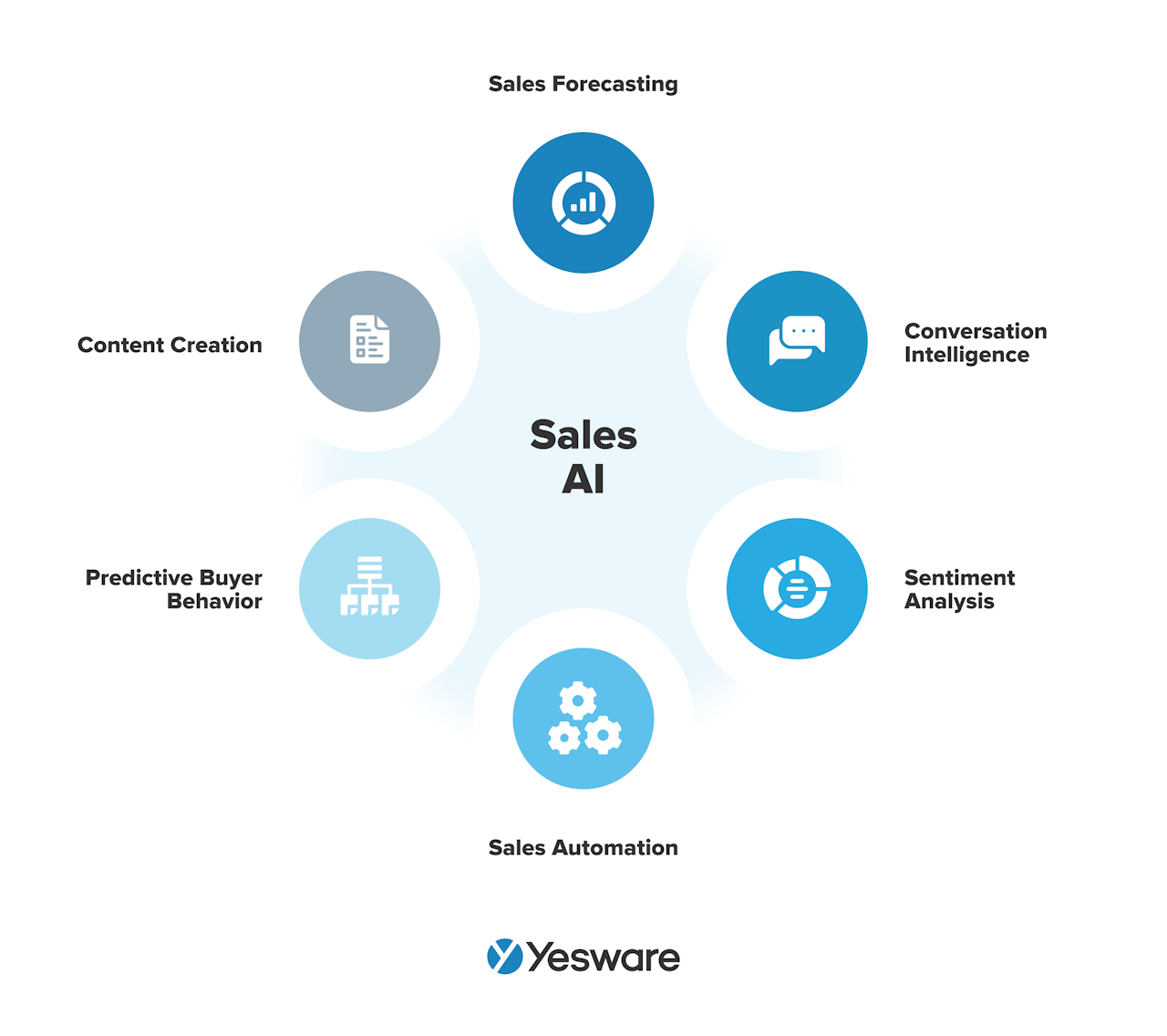 And for the worried sales reps out there wondering if their jobs are about to become obsolete, don’t fret — the number of sales jobs that demand a high degree of social intelligence and interpersonal connection is expected to grow by almost 8% by 2030.
And for the worried sales reps out there wondering if their jobs are about to become obsolete, don’t fret — the number of sales jobs that demand a high degree of social intelligence and interpersonal connection is expected to grow by almost 8% by 2030.
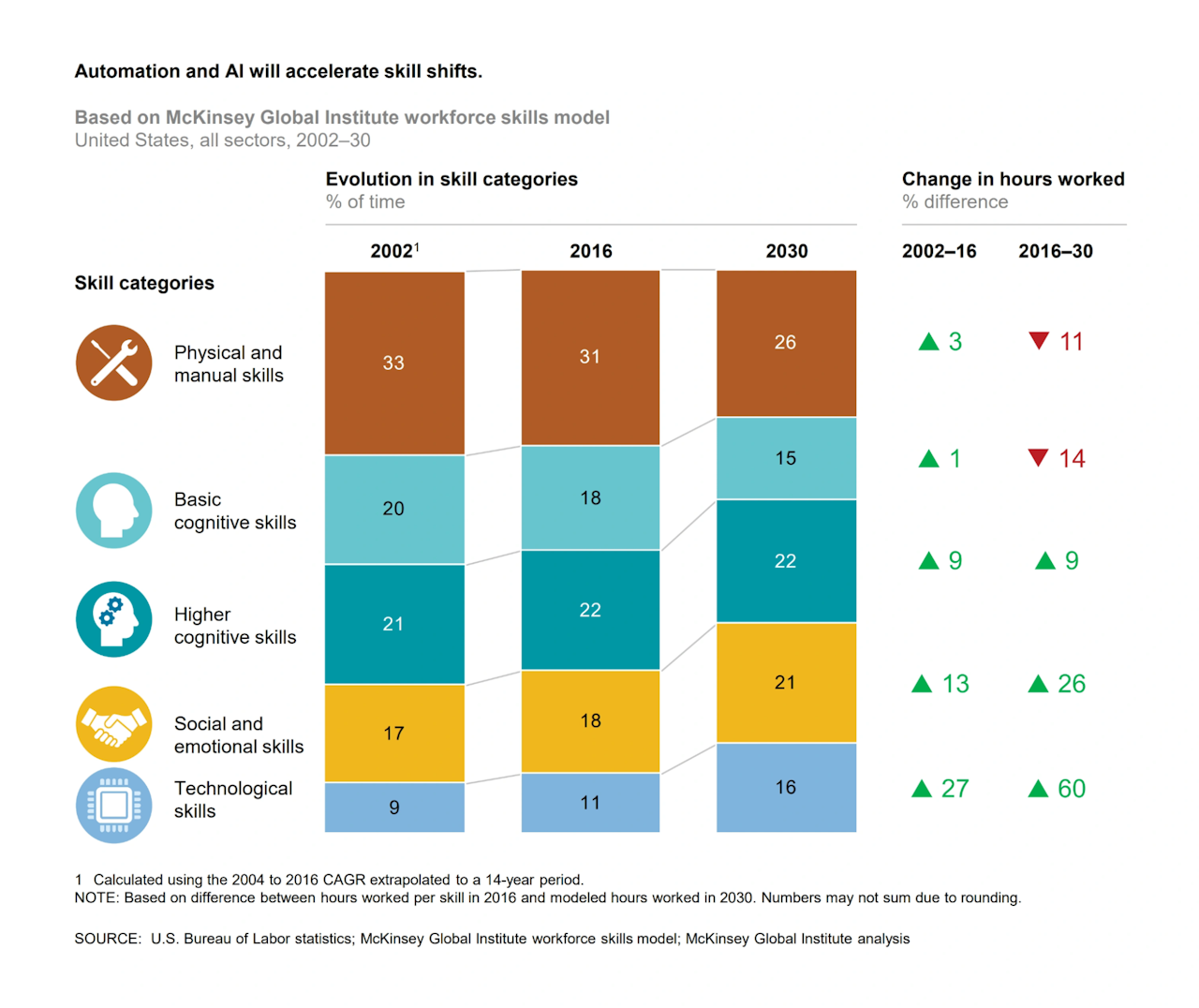
Sales and marketing teams that are most successful with AI and ML are using it to enhance human resources, and vice versa. The key is to leverage AI tools and features in a way that takes your team to the next level, not simply replaces the work they do.
10. Targeting Gen Z: Strategies for the New Generation of B2B Buyers
For years, millennials have been the most common age demographic for the B2B buyer.
But marketers and sales reps shouldn’t get too complacent in their millennial sales strategies, because Gen Z isn’t far behind them.
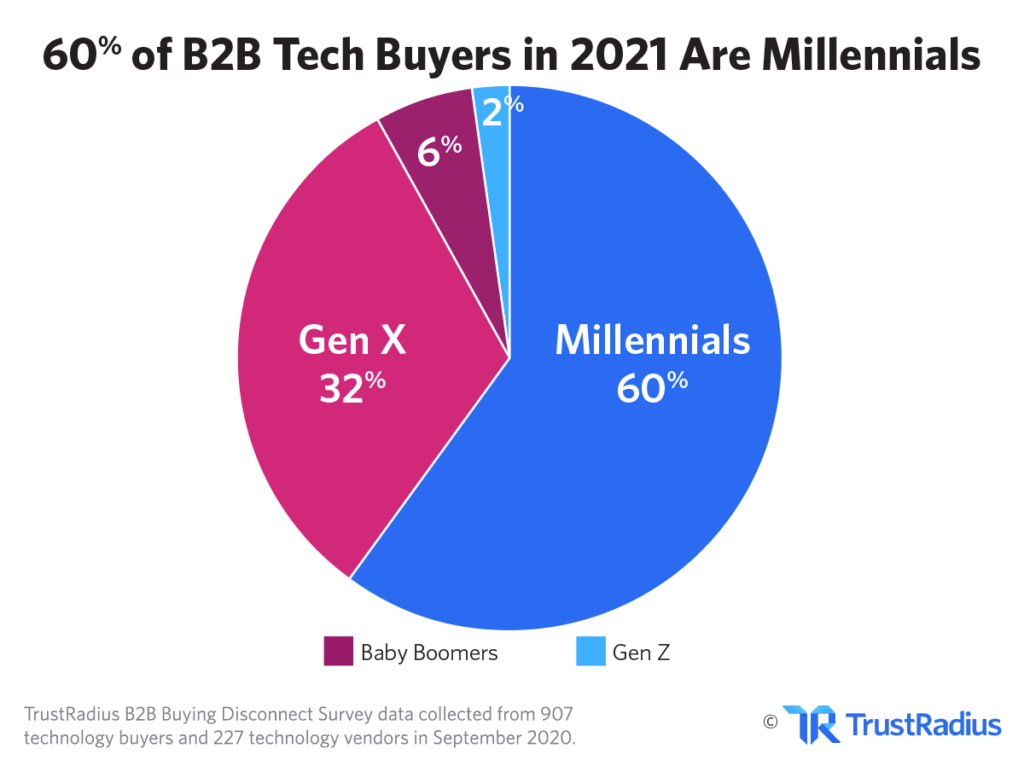
Marketing and sales teams need to understand how to reach this unique subset of buyers, because their buying power is growing — and their needs and preferences are quite a bit different from those of their predecessors’.
One of the defining characteristics of Generation Z is their overwhelming digital literacy. Gen Z was the first to grow up in an entirely digital world and are, therefore, extremely comfortable across most digital spheres.
There are other traits that are stereotypical of Gen Z, too.
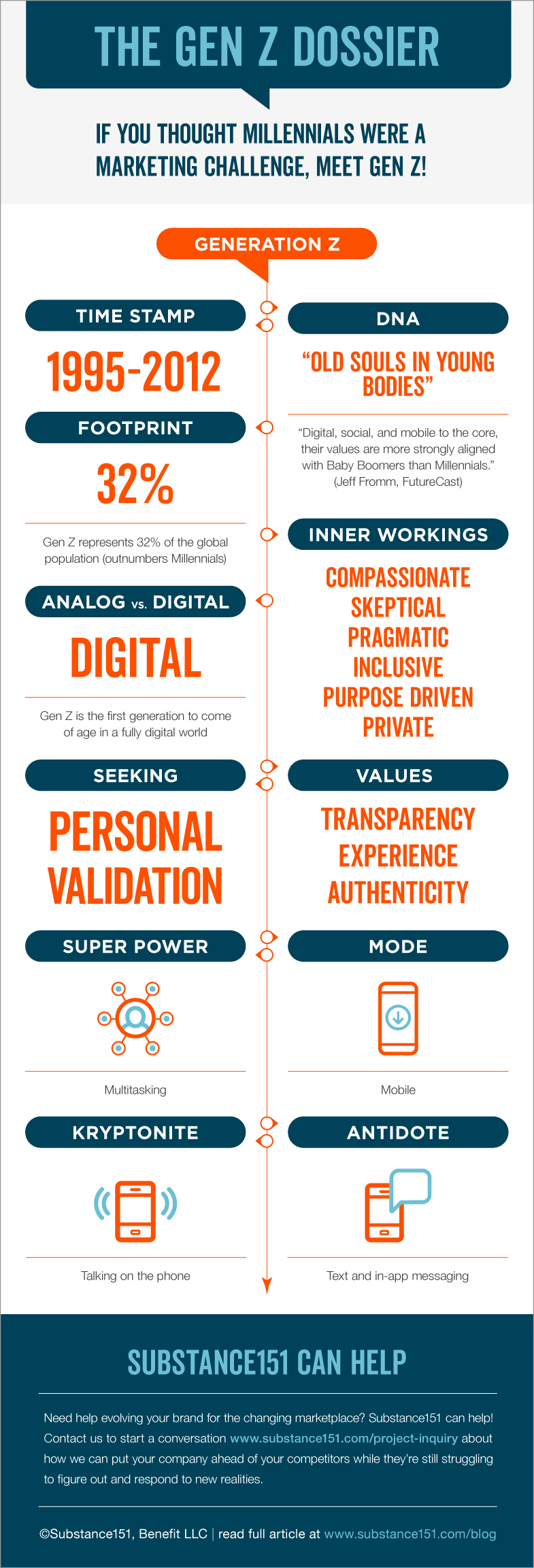
Gen Z expects a fully integrated digital experience when they shop. They don’t have patience for slow-to-load web pages or apps, clunky interfaces, or a frustrating UX.
They also place significant value on their individuality and the right to individuality in general. To that end, they expect a highly personalized and even bespoke buying experience.
11. Elevating Customer Experience in B2B Sales
More than 85% of B2B buyers today will pay a premium for a fantastic buying experience.
Beyond that, 70% of purchases are made based on how buyers feel they were treated throughout the sales process.
Now more than ever, the customer experience has a big impact on your team’s success.
Keep in mind (again) that most prospects are already well-educated about your offer — and their other options — by the time they reach out to you. They aren’t looking for an experience where they’re strong-armed and swindled by fancy facts.
Instead, today’s B2B buyer is looking for a sales experience that’s:
- On their timeline (including fast responses when they’re ready to talk)
- Personable and customized to their needs
- Technologically seamless
One way to learn more about your customers’ experience is to determine your net promoter score (NPS).
A customer’s NPS can fall anywhere between 0 – 10, and is a measure of how likely they would be to recommend your company to someone else.
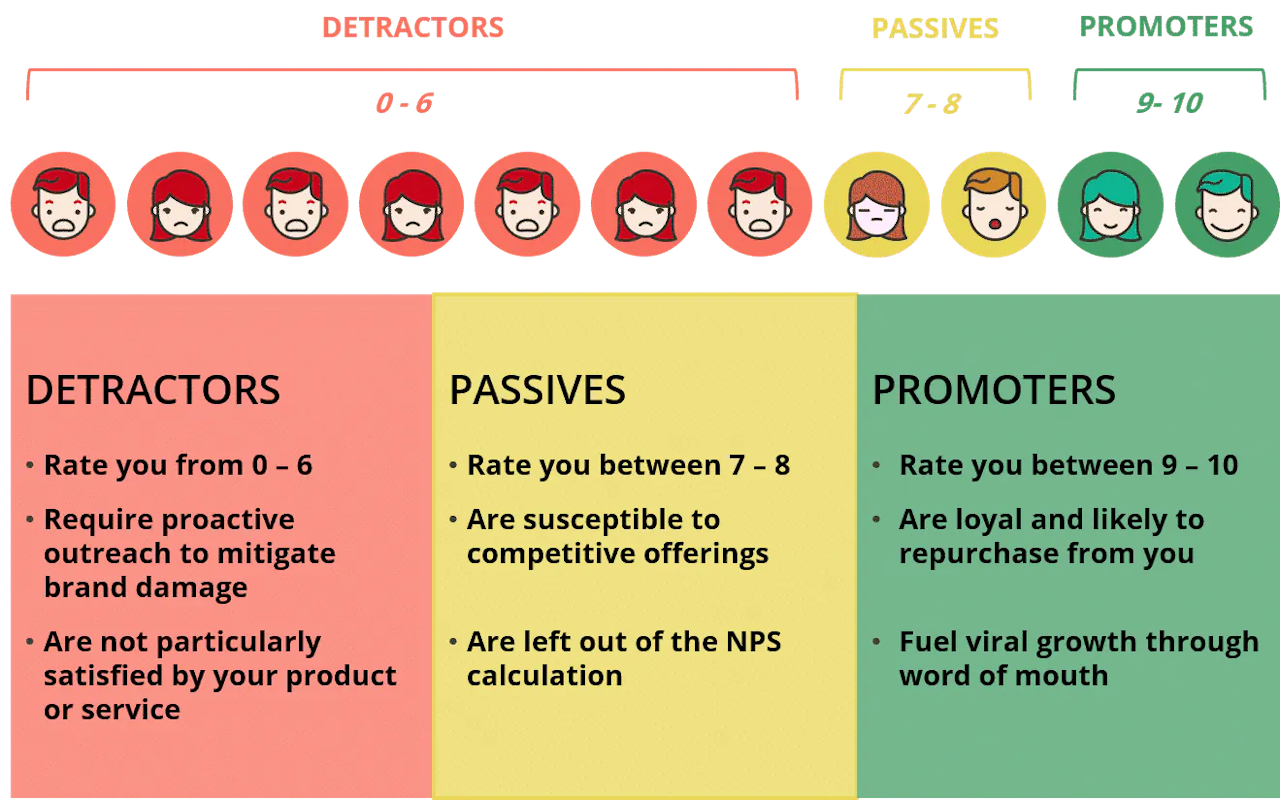
You can calculate your NPS by sending an anonymous survey to your customers.
It goes without saying, but the more positive your customers’ experiences are with your brand, the more benefits your brand will enjoy:
- Prospects are more likely to follow through with purchase (90% of buyers are more likely to purchase after reading a positive review).
- Buyers are more likely to sign up for cross-sell and/or upsell offers.
- Happy customers are more likely to make referrals.
That last point — referrals — is huge. Sales referrals are like gold for B2B companies. 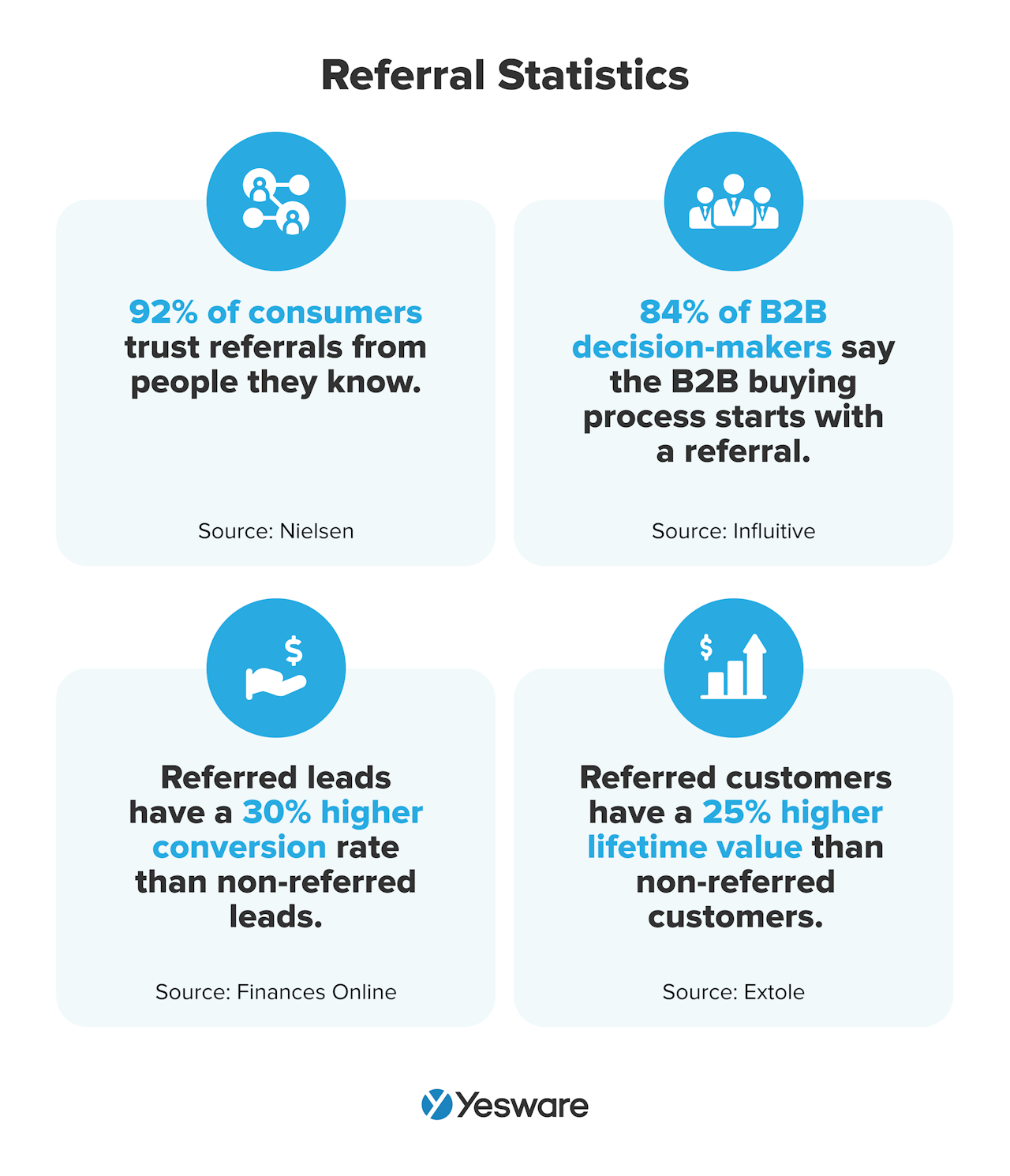 Here’s a tip: smart sales teams leverage their sales automation to help improve their customers’ experiences with their brands.
Here’s a tip: smart sales teams leverage their sales automation to help improve their customers’ experiences with their brands.
12. Sales and Marketing Alignment: A Unified Approach
The idea of aligning sales and marketing is hardly a trend, as top-performing organizations have standardized this collaborative practice for years.
That being said, it’s as important now as it’s ever been, so it deserves a spot among trends to prioritize in 2024.
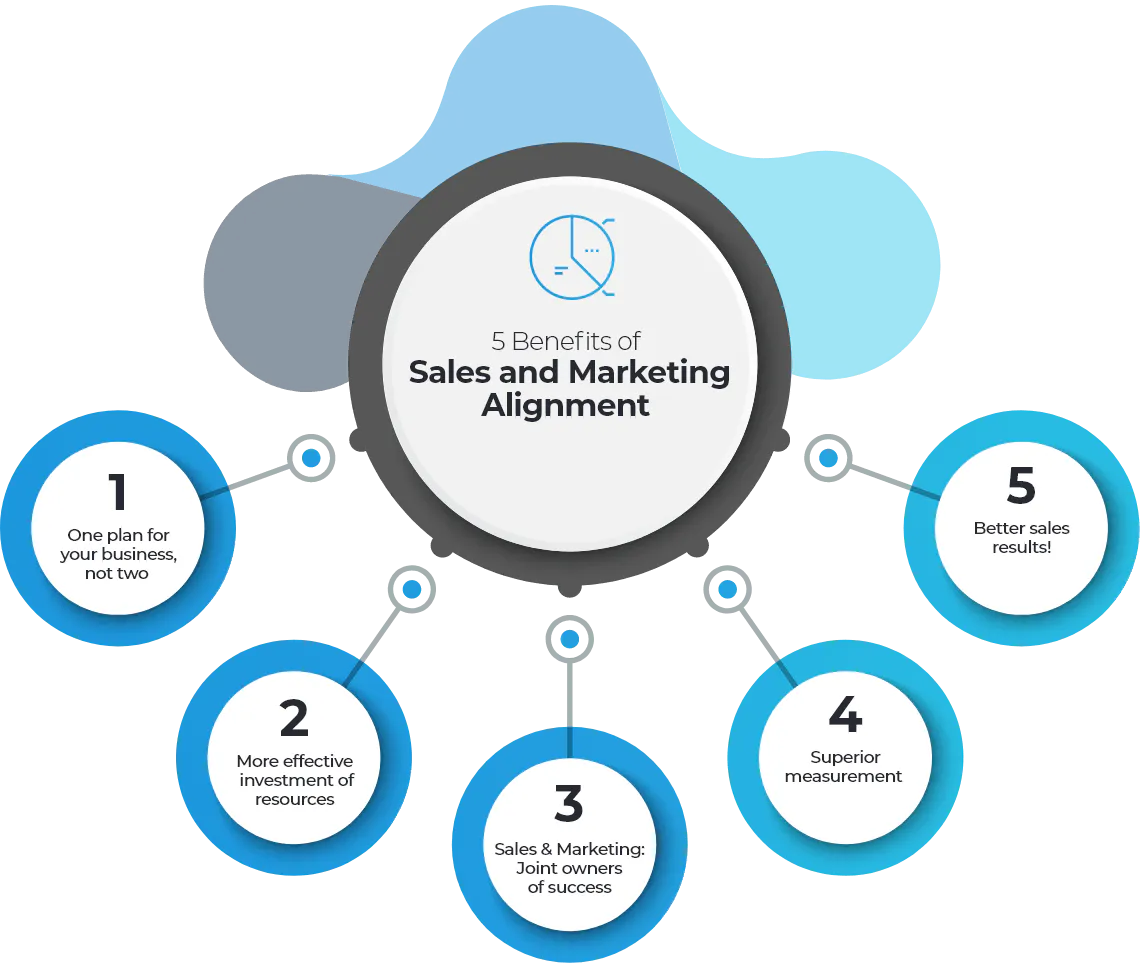
According to the Aberdeen Group, effective alignment between sales and marketing can lead to a 32% increase in year-over-year (YoY) growth.
Wheelhouse Advisor data is perhaps even more impressive.
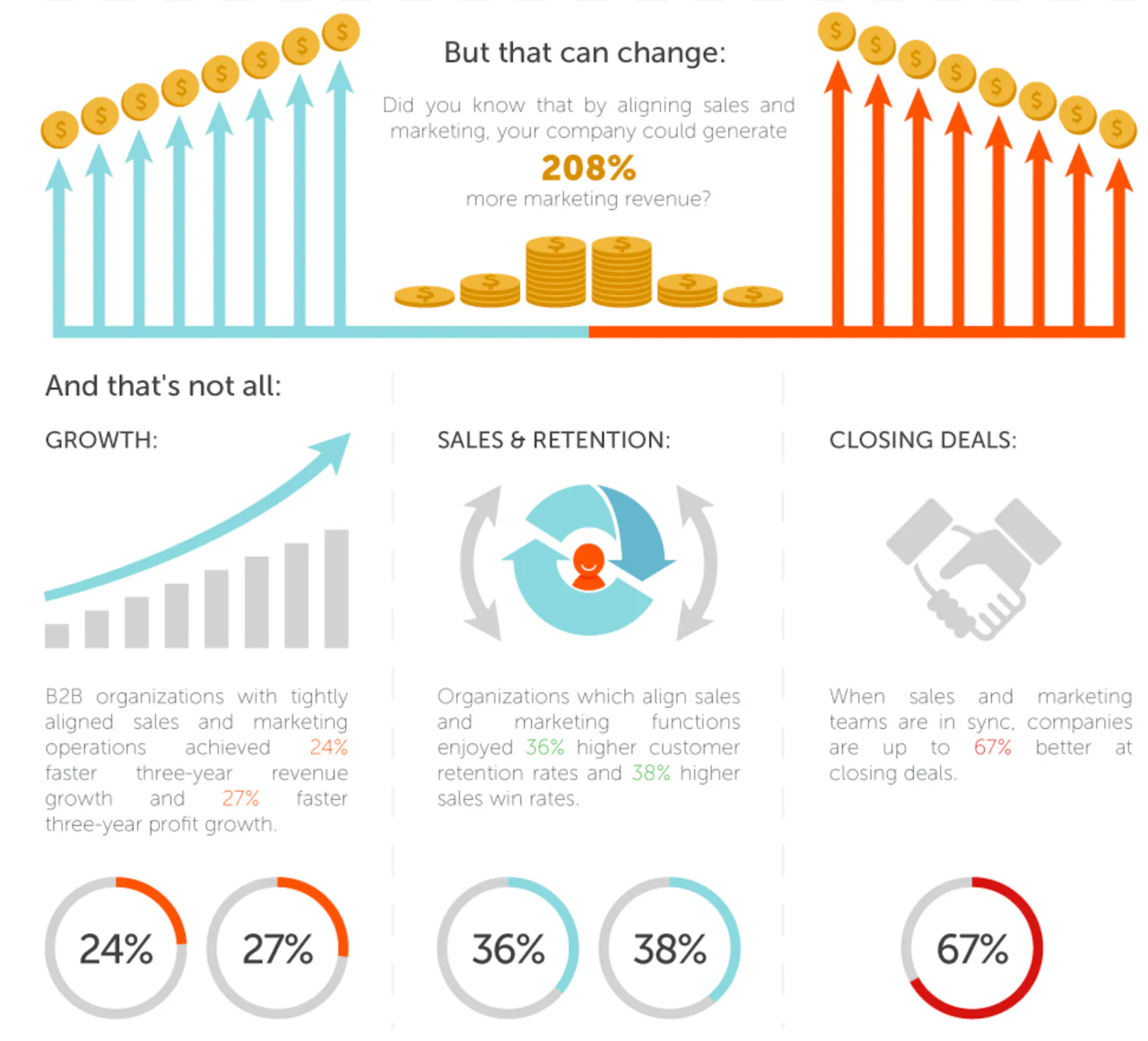
Still, for all its benefits, alignment between these two ridiculously busy teams is no easy feat. Here are a few practical tips to prevent team silos and maintain open communication:
- Meet Regularly: Your teams should have routine meetings scheduled at least monthly, but ideally biweekly. This is a chance to share updates, create new goals, troubleshoot challenges, and address anything else that needs to be discussed collaboratively.
- Share (the Right) Technology: Sales and marketing should both have access to the same tech stack, and that tech stack should meet both teams’ needs. Look for platforms that foster collaboration and shared workflows.
- Give Feedback: One of the biggest benefits of sales and marketing alignment is the fact that the two teams can give each other highly valuable feedback about how to improve the process on either end.
If your sales and marketing teams aren’t aligned yet, start with your CRM. Dig into the data together, and start talking about ways to make the processes around CRM management more collaborative. The alignment process can easily take off from there.
13. The Rise of Influencer Marketing
Perhaps the most stereotypically “trendy” trend on our list, influencer marketing has certainly become a hot topic among marketers and salespeople over the past several years.
Whatever your personal opinion of the field or influencers themselves, the figures don’t lie that it’s widely popular: influencer marketing is now a $19.8 billion industry (and growing).
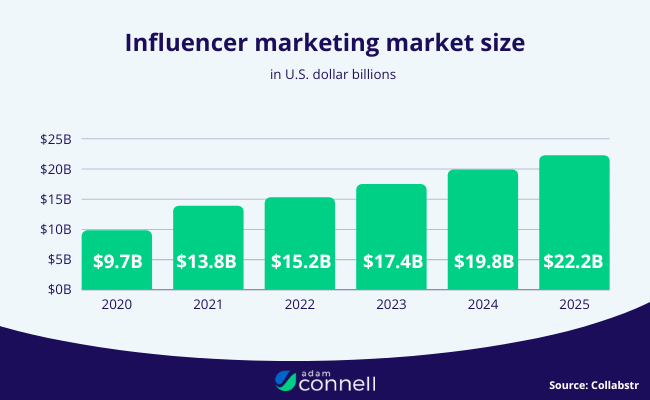
Working with an effective influencer can help add credibility, authority, and trust to your brand.
The key to making this sales trend a long-term success for your team is choosing the right influencers to work with.
Most importantly, make sure you select from among influencers that your target market is most likely to follow. A large and engaged following is also important, but those followers won’t be engaged in your content if they’re not qualified buyers for your offer.
Conclusion
Remember: most sales trends become popular for good reason. With flexibility, commitment, and an analytical process, sales teams can be successful with all of the 2024 sales trends in our list and remain competitive in the fastest-evolving sales landscape in recent history.
Get sales tips and strategies delivered straight to your inbox.
Yesware will help you generate more sales right from your inbox. Try our Outlook add-on or Gmail Chrome extension for free, forever!
Related Articles
Casey O'Connor
Casey O'Connor
Casey O'Connor
Sales, deal management, and communication tips for your inbox

